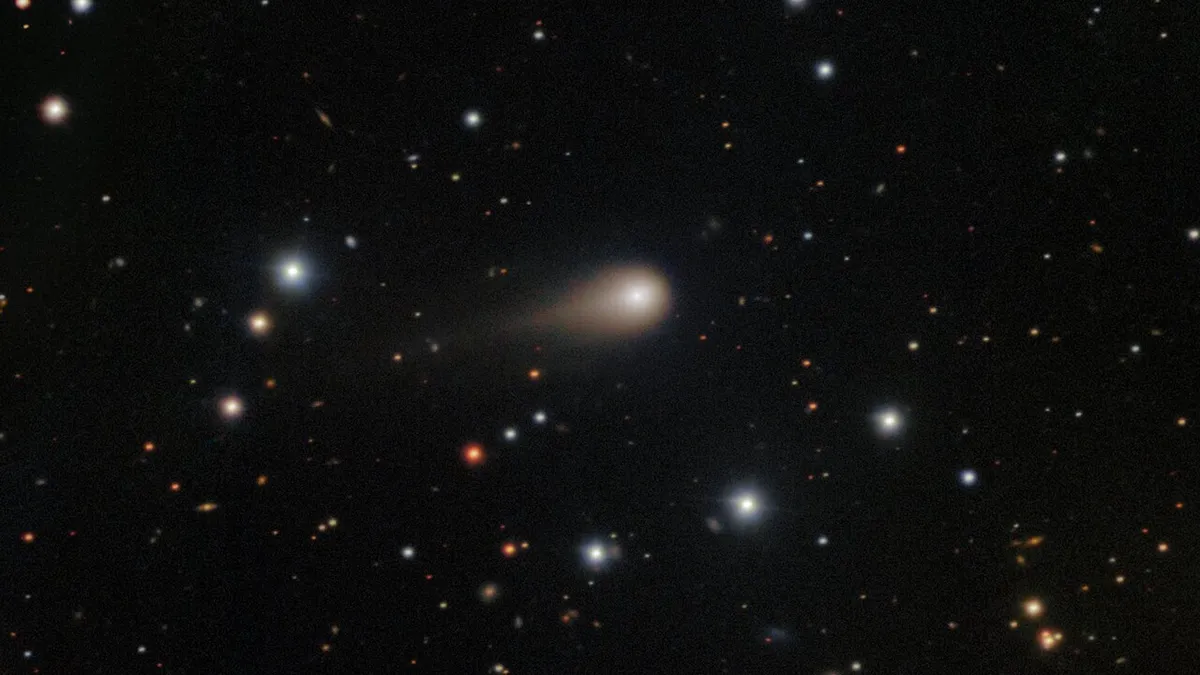
Astronomers are increasingly closing in on the age and origin of the interstellar comet 3I/ATLAS as it makes its way toward the center of our solar system. A recent study has modeled the comet's journey over the last 4 million years through the Milky Way, suggesting that this interstellar visitor may have originated from a region where the galaxy's oldest and youngest stars converge. If this hypothesis holds true, 3I/ATLAS could be a relic from the early galaxy, potentially dating back billions of years, far older than our own sun.
First observed in late June and confirmed by NASA in early July, 3I/ATLAS is a remarkable comet. Its incredible speed and unusual trajectory indicate that it hails from a star system beyond our solar neighborhood. It is only the third interstellar object ever detected, following 1I/'Oumuamua and 2I/Borisov, and it appears to be the largest of the trio, with estimates placing its size between 3 and 7 miles (4.8 to 11.2 kilometers) wide.
This cosmic traveler is currently on a months-long tour through our inner solar system. It made a close approach to Mars on October 3 and is expected to pass closest to the sun on October 30, according to NASA. Following this, 3I/ATLAS will continue its journey toward interstellar space, passing Jupiter in March 2026 before ultimately disappearing from view. Fortunately, the comet poses no threat to Earth.
While the immediate trajectory of 3I/ATLAS is relatively easy to predict, determining its origins is a far more complex challenge. The comet is traveling at an astonishing 130,000 miles per hour (210,000 kmh)—a record speed for interstellar objects. This rapid pace suggests it has been gaining velocity for millions, if not billions, of years, making it susceptible to the gravitational influences of numerous stars in the Milky Way.
NASA often employs the gravitational forces of planets to slingshot spacecraft into deeper orbits, and similarly, 3I/ATLAS could have been diverted from its original path by the gravity of massive stars along its journey. A new research study published on the preprint server arXiv aims to better understand the comet's origins by investigating which nearby stars may have influenced its orbit.
The study utilized data from the European Space Agency's Gaia space telescope to trace the comet's trajectory back in time over 4.27 million years, identifying 62 nearby stars the comet likely encountered. The researchers concluded that none of these stars significantly altered the comet's orbit, suggesting it did not originate close to our solar system. Lead study author Xabier Pérez-Couto, a postgraduate student in astrophysics at Spain's Universidade da Coruña, stated, "We have found that none of the stars in the solar neighborhood can explain the trajectory and high velocity of 3I/ATLAS."
Interestingly, only one nearby star, approximately 70% the mass of the sun, seemed to have had a minimal impact on the comet's trajectory. This led the researchers to propose that 3I/ATLAS is an ancient object, having traveled for billions of years from the outer edges of the thin disk of the Milky Way.
Why is the comet's potential origin from the border of the thin and thick disks significant? The Milky Way galaxy categorizes its stars between a thin disk and a thick disk. The thin disk, which slices through the central bulge of the galaxy, contains a higher concentration of younger stars and star-forming gases, enriched with elements heavier than hydrogen and helium from older generations. In contrast, the thick disk, encircling the thin disk, lacks ongoing star formation and contains a smaller, yet much older, population of stars with fewer heavy metals.
If comet 3I/ATLAS did originate from the boundary of these two disks, it could be an incredibly ancient object—potentially up to 10 billion years old, more than double the age of our sun, which is approximately 4 billion years old. According to Pérez-Couto, the comet may have been ejected from the primordial disk of an early planetary system, possibly serving as a vital time capsule of the ancient Milky Way.
However, the study does recognize its limitations, as analyzing nearby stars only accounts for a few million years of the comet's extensive history, leaving its exact origin still uncertain. As 3I/ATLAS continues its swift journey through the solar system, scientific instruments on Earth, Mars, and orbiting Jupiter will soon have opportunities to study the comet in greater detail. Unraveling the interstellar object's composition will provide essential clues to its cosmic birthplace and potentially open a valuable window into our galaxy's past.